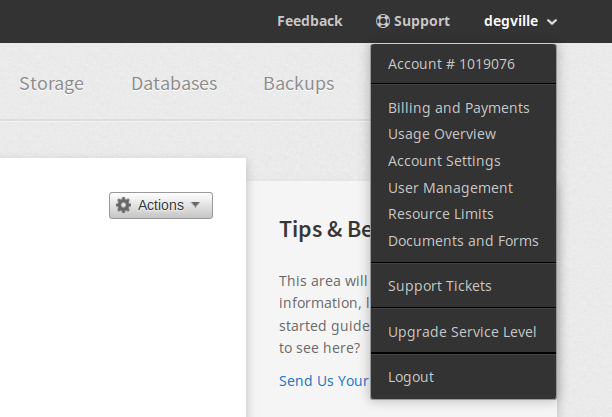NOTE: DEPRECATED.
Rackspace no longer offers its own hardware, so this is no longer applicable.
Juju already has knowledge of the Rackspace cloud, which means adding your Rackspace account to Juju is quick and easy.
More specific information on Juju’s Rackspace support (e.g. the supported regions) can be seen locally or, since v.2.6.0, remotely (on a live cloud). Here, we’ll show how to do it locally (client cache):
juju show-cloud --local rackspace
In versions prior to v.2.6.0 the show-cloud command only operates locally (there is no --local option).
To ensure that Juju’s information is up to date (e.g. new region support), you can update Juju’s public cloud data by running:
juju update-public-clouds
Contents:
Add credentials
The Cloud credentials page offers a full treatment of credential management.
Using Juju’s interactive authentication, importing Rackspace credentials into Juju is a simple process. The only information you’ll need is your Rackspace username, password and tenant name (which is actually a number):
-
usernameThe name used to login to the Rackspace cloud control panel. -
passwordThe password used to login to the Rackspace cloud control panel. -
tenant-nameThe Rackspace account number. You can view this in the cloud control panel in the top-right corner (under your username), as shown in the following image:

Credentials can now be added by running the following command:
juju add-credential rackspace
The first question will ask for an arbitrary credential name, which you choose for yourself. This will be how you remember and refer to this Rackspace credential in Juju. The second question will ask you to select an ‘Auth Type’, with the options being either access-key or userpass.
Enter userpass as the authentication type and then enter your username, password and tenant-name, as described above.
You can now start using Juju with your Rackspace cloud.
Create a controller
You are now ready to create a Juju controller for cloud ‘rackspace’:
juju bootstrap rackspace rackspace-controller
Above, the name given to the new controller is ‘rackspace-controller’. Rackspace will provision an instance to run the controller on.
The controller will now be visible in the Rackspace cloud control panel:
For a detailed explanation and examples of the bootstrap command see the Creating a controller page.
Next steps
A controller is created with two models - the ‘controller’ model, which should be reserved for Juju’s internal operations, and a model named ‘default’, which can be used for deploying user workloads.
See these pages for ideas on what to do next:
